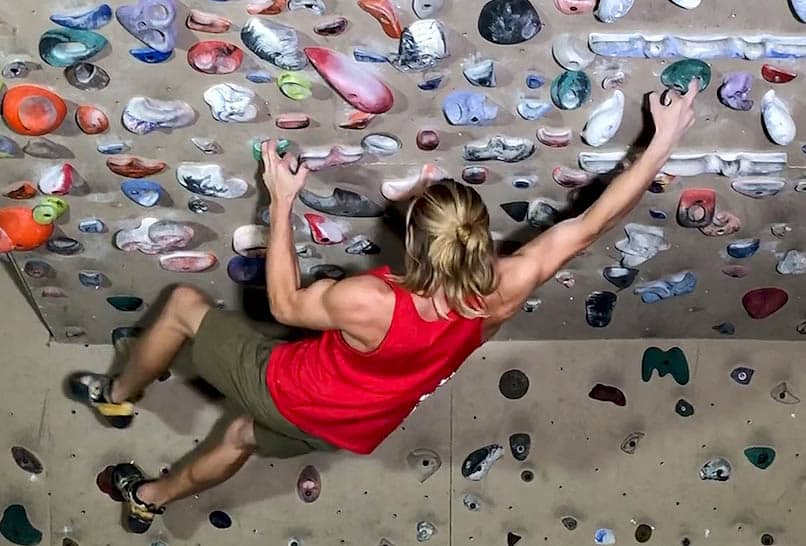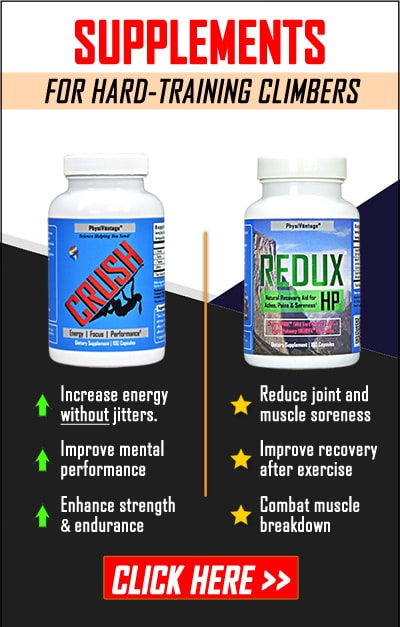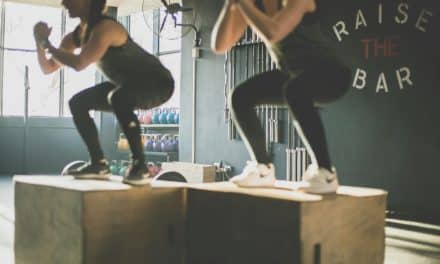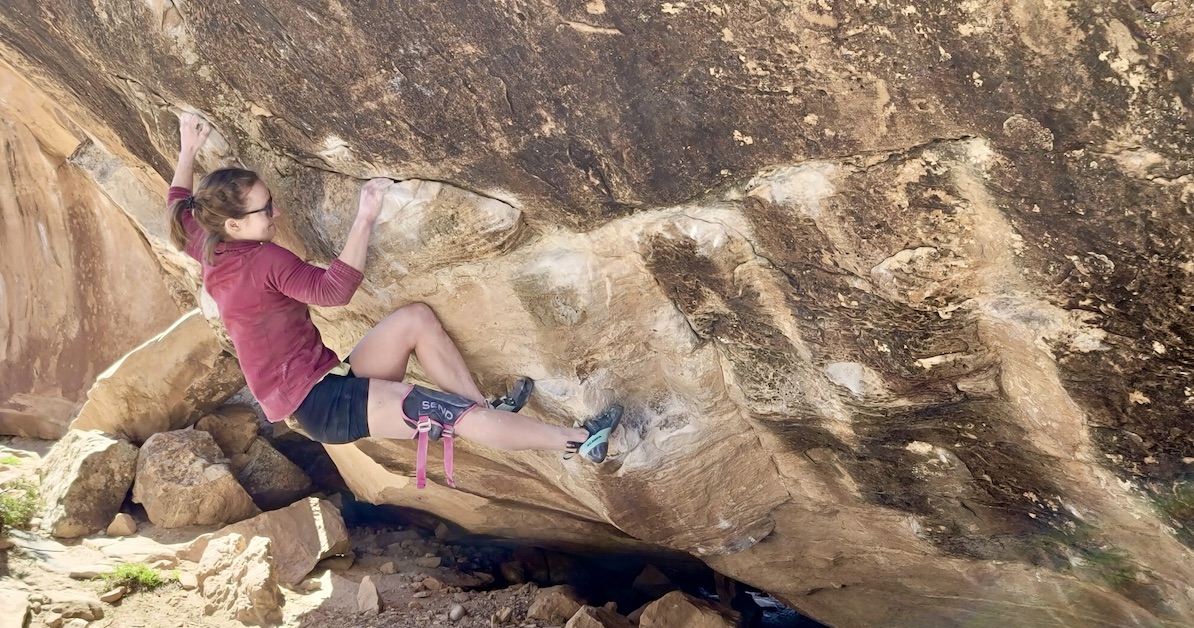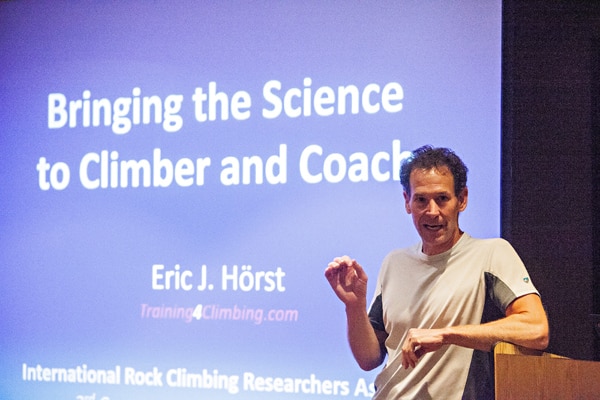Bring your project home with you! Indoor simulator training is one of the most effective ways to prepare for your outdoor boulder or sport route projects.
(This article was originally published in October of 2019, and has been updated to include relevant usages of indoor simulator training in some of the most impressive accomplishments in climbing to date!)
The goal with indoor simulator training is to recreate the crux sequence. This can be done using holds and wall angles as similar as possible to your outdoor project climb. Training on an indoor simulator for a few sessions—or weeks—will solidify motor programs, proprioception, and movement efficiency in ways that transfer directly back to your project. You’ll also develop a higher level of move-specific strength and power. Just as importantly, you’ll gain both confidence and endurance by refining your sequences to the point of automation.
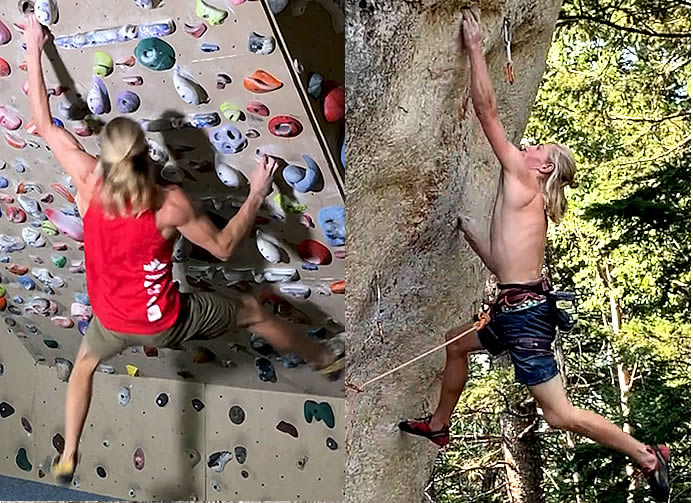
This dynamic stab into a two-finger pocket is one of the harder moves in the middle of the long V12 crux sequence on Moonshine (5.14d).
Many a high-performing climber, including our very own Cameron Hörst, uses simulator training to get relevant practice in between outdoor trips. Most recently, Will Bosi sent Burden of Dreams (V17) thanks in large part to his hard work on an indoor simulator problem. The indoor simulator allowed him to work out the finer details of the climb in a controlled setting. He could also access the simulator much more frequently than the actual boulder itself. This greatly increased the amount of time he could spend perfecting the moves.
How to Incorporate Simulator Training
In the video below, Cameron Hörst describes how he used simulator training on his home wall to prepare for his first 5.14d ascent. His project route, Moonshine, features strenuous small one- and two-finger pockets and slippery foot edges. These features must be climbed precisely and quickly to maximize efficiency. Cameron worked on Moonshine for about 10 days scattered throughout July and August 2019. He then claimed the sixth known ascent of the route on August 29th.
PRO TIP: Repeated training on small crimps and pockets is hard on the fingers. Cameron builds Supercharged Collagen into his daily training to support tendon and ligament recovery/strength from such demanding training.
Related Articles:
- Tips for an Effective First Effort on a Climbing Project
- Projecting 101: 6 Tips for Sending Your Project
- The “10-4” Rule for Projecting Sport Climbs
- Highpointing Versus Lowpointing Tactics for Sending Your Project
- Anatomy of a Redpoint Project
Copyright © 2000–2024 Eric J. Hörst | All Rights Reserved.

